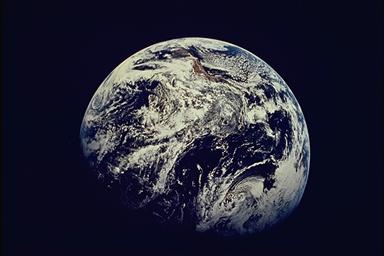26 September, 2008
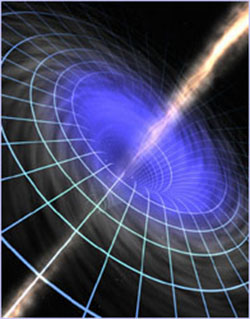 Time travel is the concept of traveling forward and backward to different points in time, much as we do through space.
Time travel is the concept of traveling forward and backward to different points in time, much as we do through space.Unsolved problems in physics: Is time travel theoretically possible? Is it practically possible? If so, what are we to make of the time travel paradoxes, such as going back in time and killing one's own grandfather, etc.?
Humans are in fact always traveling in time in a linear fashion, from the present to the immediate future, inexorably, until death.
Some theories are predicated on the fact that we move forward in time, and both forward and backward in space. Since time and space have been shown to be intrinsically linked, travelling forwards and backwards through time is not a theoretical impossibility.
Currently, traveling at speeds approaching the speed of light can cause time dilation, the effects of which cause the individual traveling to pass through time more slowly. From the perspective of the traveler, external time would be going much faster, causing the traveler, upon stopping, to arrive at a place farther in the future.
Often it is a plot device used in science fiction and many movies and television shows to set a character in a particular time not their own, and
explore the character's interaction with the people and technology of that time - as a kind of culture shock.
Other ramifications explored are change and reactions to it, parallel universes, and alternative history where some little event took place or didn't take place, but causes large changes in the future.
In physics, the concept of time travel has been often used to examine the consequences of physical theories such as special relativity, general relativity and quantum mechanics.
There is no experimental evidence of time travel, and it is not even
well understood whether (let alone how) the current physical theories permit any kind of time travel. Although theories do exist about the possiblity of folding time to hop from one point to another.
on, and there is little doubt surrounding its existence; "time travel" will hereafter refer to travel with some degree of freedom into the past or future.
Many in the scientific community believe that time travel is highly unlikely. This belief is largely due to Occam's Razor. Any theory which would allow time travel would require that issues of causality be resolved. What happens if you try to go back in time and kill your grandfather. Also, in the absence of any experimental evidence that time travel exists, it is theoretically simpler to assume that it does not happen. Indeed, Stephen Hawking once suggested that the absence of tourists from the future constitutes a strong argument against the existence of time travel - a variant of the Fermi paradox, with time travelers instead of alien visitors. However, assuming that time travel cannot happen is also interesting to physicists because it opens up the question of why and what physical laws exist to prevent time travel from occurring.
The equivalence of time travel and faster-than-light travel
First of all, if one is able to move information from one point to another faster than light, then according to special relativity, there will be an observer who sees this information transfer as allowing information to travel into the past.
The General Theory of Relativity extends the Special Theory to cover gravity. It does this by postulating that matter "curves" the space in its vicinity. But under relativity, properties of space are fairly interchangeable with properties of time, depending on one's perspective, so that a curved path through space can wind up being a curved path through time. In moderate degrees, this allows two straight lines of different length to connect the same points in space; in extreme degrees, theoretically, it could allow timelines to curve around in a circle and reconnect with their own past.
General relativity describes the universe under a complex system of "field equations," and there exist solutions to these equations that permit what are called "closed time-like curves," and hence time travel into the past. The first and most famous of these was proposed by Kurt Gödel, but all known current examples require the universe to have physical characteristics that it does not appear to have. Whether general relativity forbids closed time-like curves for all realistic conditions is unknown. Most physicists believe that it does, largely because assuming some principle against time travel prevents paradoxical situations from occurring
An object that goes into the stationary end would come out of the other end in the past relative to the time when it enters. One significant limitation of such a time machine is that it is only possible to go as far back in time as the initial creation of the machine; in essence, it is more of a path through time than it is a device that itself moves through time, and it would not allow the technology itself to be moved backwards in time.
This could provide an alternative explanation for Hawking's observation: a time machine will be built someday, but hasn't been built yet, so the tourists from the future can't reach this far back in time.
Creating a wormhole of a size useful for macroscopic spacecraft, keeping it stable, and moving one end of it around would require significant energy, many orders of magnitude more than the Sun can produce in its lifetime. Construction of a wormhole would also require the existence of a substance known as "exotic matter," or "negative matter", which, while not known to be impossible, is also not known to exist in forms useful for wormhole construction (but see for example the Casimir effect).
Therefore it is unlikely such a device will ever be constructed, even with highly advanced technology. On the other hand, microscopic wormholes could still be useful for sending information back in time.Matt Visser argued in 1993 that the two mouths of a wormhole with such an induced clock difference could not be brought together without inducing quantum field and gravitational effects that would either make the wormhole collapse or the two mouths repel each other. Because of this, the two mouths could not be brought close enough for causality violation to take place.
However, in a 1997 paper, Visser hypothesized that a complex "Roman ring" (named after Tom Roman) configuration of an N number of wormholes arranged in a symmetric polygon could still act as a time machine, although he concludes that this is more likely than not a flaw in classical quantum gravity theory rather than proof that causality violation is possible.
Another approach, developed by Frank Tipler, involves a spinning cylinder. If a cylinder is long, and dense, and spins fast enough about its long axis, then a spaceship flying around the cylinder on a spiral path could travel back in time (or forward, depending on the direction of its spiral). However, the density and speed required is so great that ordinary matter is not strong enough to construct it. A similar device might be built from a cosmic string, but none are known to exist, and it doesn't seem to be possible to create a new cosmic string.
Physicist Robert Forward noted that a naïve application of general relativity to quantum mechanics suggests another way to build a time machine. A heavy atomic nucleus in a strong magnetic field would elongate into a cylinder, whose density and "spin" are enough to build a time machine. Gamma rays projected at it might allow information (not matter) to be sent back in time. However, he pointed out that until we have a single theory combining relativity and quantum mechanics, we will have no idea whether such speculations are nonsense.
Using Quantum Entanglement
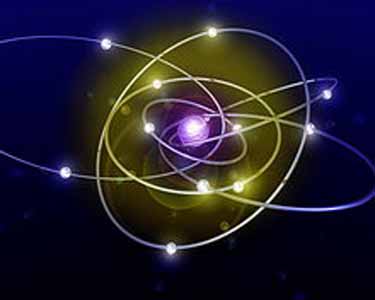
Nevertheless, the rules of quantum mechanics curiously appear to prevent an outsider from using these methods to actually transmit useful information, and therefore do not appear to allow for time travel or FTL communication. This misunderstanding seems to be widespread in popular press coverage of quantum teleportation experiments. The assumption that time travel or superluminal communications is impossible allows one to derive interesting results such as the no cloning theorem, and how the rules of quantum mechanics work to preserve causality is an active area of research.
The Novikov self-consistency principle and recent calculations by Kip S. Thorne indicate that simple masses passing through time travel wormholes could never engender paradoxes - there are no initial conditions that lead to paradox once time travel is introduced. If his results can be generalized they would suggest, curiously, that none of the supposed paradoxes formulated in time travel stories can actually be formulated at a precise physical level: that is, that any situation you can set up in a time travel story turns out to permit many consistent solutions. The circumstances might, however, turn out to be almost unbelievably strange.
Parallel universes might provide a way out of paradoxes. Everett's many-worlds interpretation of quantum mechanics suggests that all possible quantum events can occur in mutually exclusive histories. These alternate, or parallel histories would form a branching tree symbolizing all possible outcomes of any interaction.
Since all possibilities exist, any paradoxes can be explained by having the paradoxical events happening in a different universe. This concept is most often used in science-fiction. However, in actuality, physicists believe that such interaction or interference between these histories is not possible.
Time travel and the anthropic principle
It has been suggested by physicists such as Max Tegmark that the absence of time travel and the existence of causality may be due to the anthropic principle. The argument is that a universe which allows for time travel and closed time-like loops is one in which intelligence could not evolve because it would be impossible for a being to sort events into a past and future or to make predictions or comprehend the world around them.
Note that this imposes no restriction on supernatural agents (e.g. God) which are not confined by the bounds of spacetime. See the next section for details.
Time Travel and Religion
It is interesting to note that any religion which postulates the existence of fulfilled prophecy requires, at the very least, an agent which can move information from the future into the past.
In Christian theology, for example, God is assumed to exist unbound by space or time. Doctrinally, God is held to be omniscient and omnipresent. Statements in the Bible such as Jesus's claim "before Abraham was born, I am" (John 8:58) and Peter's claim "[Jesus] was chosen before the creation of the world" (1 Peter 1:20) (assuming the creation of the world began at t = 0) imply that God does not occupy the same timeline that we do. This is further supported by the assertion "I the LORD do not change" (Malachi 3:6), since change requires movement along, and constrained by, a temporal continuum.
Two popular interpretations of these statements are that God exists outside the space-time continuum; or exists at every point in space-time simultaneously. In either case, God can transfer information from one point in space-time to any other point without restriction.
Transcending time through ancient wisdom
The Yoga Sutras of Patanjali have been considered by some, such as physicist Fred Alan Wolf in his book, The Yoga of Time Travel to describe an inner process by which we can access knowledge of the past and future in the present. This form of time travel can be acquired by transcending the five Earthly anchors of the ego mind which otherwise leave us locked into the illusory self.
Time Travel in Fiction
H. G. Wells' The Time Machine is considered the literary masterpiece of the genre. Mark Twain's A Connecticut Yankee in King Arthur's Court is another early time travel classic.
Probably the most elaborate demonstrations of supposed time travel paradoxes are in Robert A. Heinlein's All You Zombies and By His Bootstraps.
One very well known time travel fiction writer is Jack Finney. His novels include Time and Again, From Time to Time, The Third Level, among others.
Harry Potter and the Prisoner of Azkaban by J. K. Rowling features a time travel paradox as does the film version.
Michael Crichton's Timeline, in which characters travel to 14th century France, describes time travel in great detail, explaining the science of exactly how the time machine works. The book was made into a movie in 2004, with much of the science explanation missing.
- Continued Wikipedia
Time is running out - literally, says scientist Telegraph - December 20, 2007
Why Time Seems to Slow Down in Emergencies Live Science - December 12, 2007 In The Matrix, the hero Neo could dodge bullets because ...
Falling, Falling - Preception of time Live Science - December 12, 2007
Could Physicists Make A Time Machine? It All Depends On Curving Space-time Science Daily - August 23, 2007
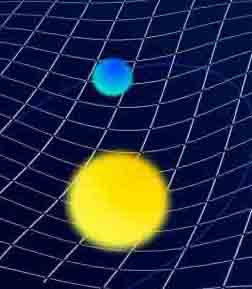
New model 'permits time travel' BBC - June 17, 2005
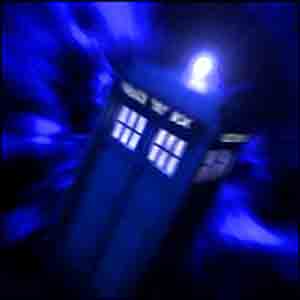
Wormhole 'no use' for time travel BBC - May 23, 2005

Time Travel and Metaphysics
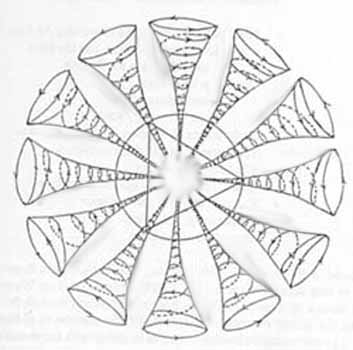
12 Around 1
Man has always sought a way to travel through time. We move through the loops of time as they spiral from reality to reality. By this is not a physical event more the movement of consciousness through a matrix of grid realities that has not boundaries. Reality is a virtual learning experience in which linear time is used to create programs of emotions.
Reality looks much like the Slinky Effect'

in which all experiences are happening simultaneously.
Reality is created by a consciousness program that we call source or god or whatever definition you wish to give to this creational energies. In third dimension, this source of white light projected a program in which it experiences - in which we all experience. the based was based on a geometry as all things in 3D follow the same patterns that merely repeat in patterns over and over and are called time.
From that consciousness - 12 pyramids of light burst forth surrounding that source creational consciousness.
The source created what you might call a programs of experience, which it projected - as in in rays of light - to the 12 pyramids. They in turn connect with each other and to the source (the Spider Web Effect).
They create a matrix, grid, hall of record, akashic record, in which the sources could experience.
The source created sparks of light made of the same 'matter' as itself, therefore all souls experience from the same source and remain connected to it.
The Matrix multiplies into an endless number of programs, based on sound, light and color frequencies. Everything is about energy and frequency brought forth in different realities of experience. The souls are now free to wander the grids as if within the slinky - experiencing in one or more places.
There is a reality called 'third dimension' which is near the bottom of the spiral. It is created by synchronicistic movements - as if the gears of of a watch - which work together to bring movement and reality.
Third dimension is created electromagnetic energies - meaning they have polarity - the positive and negative - opposites - duality - male/female - yin/yang, etc.
Third dimension - 3D - references pyramidal energies - 3. Time, and the apparent movement of time, is connected to the number 12 - which is 1+2 =3 - or third dimension.
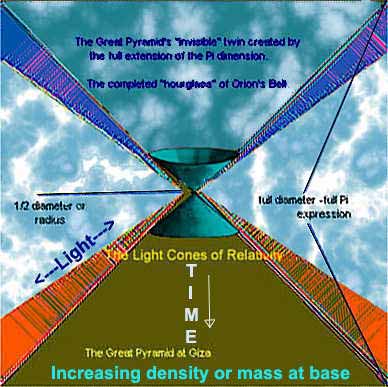
If you take the shape to the pyramid -triangle and place a matching opposite on top so that their apexes touch, you have the hourglass.
This represents 'As is above, so is below.' Emerald Tablets of Thoth.Hermes Trismegistus (three)
Three is the number that allows things to come manifest in physical expression - as you are combining sound, light and color frequencies to create a reality. To become invisible you remove one of these ingredients removing your experience from the concet of Time.
This is more easily understood when considering dreamtime, meditation, or remote viewing, in which the concept of Time no longer exists.
In our present timeline the concept of Time appears to most of us to be moving faster.
The 'gears' that create the illusion of time are breaking down - like gears on a watch slowing down as the battery that supplies their EM energies is running out.
If you view this as through the Slinky Effect - the bottom of the slinky is loosing its integrity, thus soul consciousness is moving out of third dimension into a higher spiral or loop.
As time slows down - it appears to us that it is escalating. The collapse of the synchronicity-time grids moves us into faster-higher moving frequencies - so time appears to move faster. If you feel time is 'fleeting' you are moving up the spiral of consciousness 'right on cue'.
Many of us are actually experiencing unexplained temporal anomalies - missing time - that has nothing to do with mind control, mental illness, nor alien abductions. those of us who work with Time - can see the the loops (hiccups) that occur all the time.
Time and physical reality are not fixed. They are static appearing fuild - oftne referred to as the collective flow of the unconscious mind.
Now the question arises - how do we - in third dimension - take out boides with us through physical space and time? Some say time travel can be accomplished by shifting one's conscious. Others say it can be done with a device of some kind.

The objective being - to consciously be aware of the experience and to be able to manipulate it at the physical level. This involves the study of Quantum Physics.
During World War II both the Nazis and the Americans experimented with time travel. The Philadelphia Experiment - originally an invisibility project - involved travel through both time and space. Supposedly a naval battle ship mved through time and space from 1943 - to 1983 - then back to 1943 - their 'point of origin' - yet in a fluid reality that 'point of orgin' must be compensated for as it changes. The results of the experiment were horrific.
 Personally, I know of no one who has successfully built a time machine that can take them back and forth through time - though I am sure it can be done. There are interdimensional portals / vortexes on the physical planet - particularly at the major grid points - where one can travel in time - but these are not controlled experiences. These grids points are based on the geometry of the planet and follow the same patterns as everything else in our current 3D Experience / Program. Example: The Bermuda Triangle.
Personally, I know of no one who has successfully built a time machine that can take them back and forth through time - though I am sure it can be done. There are interdimensional portals / vortexes on the physical planet - particularly at the major grid points - where one can travel in time - but these are not controlled experiences. These grids points are based on the geometry of the planet and follow the same patterns as everything else in our current 3D Experience / Program. Example: The Bermuda Triangle.Time - Clocks - Gears - Digits that repeat in patterns

Cycles of Time - Synchronicity - Sacred Geometry











 The minimum mass require for this is about 8% the mass of the Sun. Jupiter's mass is an order of magnitude below this limit. Jupiter will never be a star.
The minimum mass require for this is about 8% the mass of the Sun. Jupiter's mass is an order of magnitude below this limit. Jupiter will never be a star.



 Light objects float; heavy objects sink. Iron-Nickel Core (magnetic field) and oxygen-silicon crust
Light objects float; heavy objects sink. Iron-Nickel Core (magnetic field) and oxygen-silicon crust